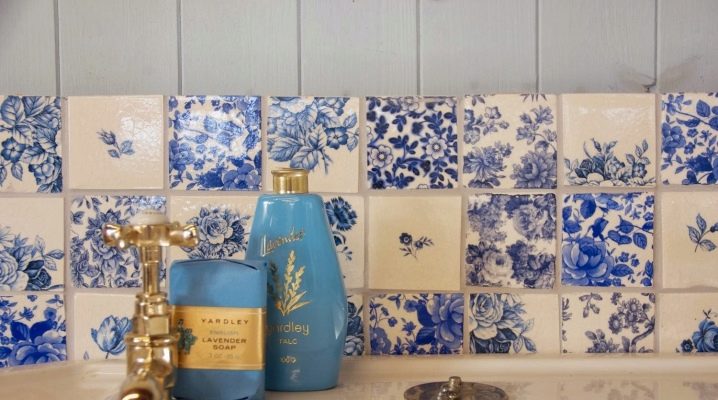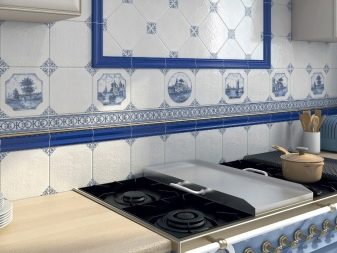Tile for "Gzhel": features and history of origin

Ceramic tiles with the "Gzhel" pattern are a wonderful decoration for the interior of the kitchen, bathroom, country house. Unusual and original drawing with various plots and pleasant calm tones will add coziness and tranquility to the atmosphere.

History
The name of the fishery comes from the name of the village of Gzhel. This village is located in the Moscow region on the banks of the Gzhelka river. This area is rich in deposits of unique colored clay.
It was this feature of the soils that laid the foundation for the fishery, which glorified the village of Gzhel not only throughout Russia, but throughout the world.



The villagers made dishes with an unusual memorable pattern from baked clay. Over time, craftsmen have improved their craft more and more. Soon, earthenware and porcelain ware began to be brought from the village to Moscow and other cities.
A memorable feature of these products is the delicate glaze painting, made in blue and light blue shades, passing into each other.

Traditional patterns and subjects for painting were grass, flowers, cereals, leaves, branches, berries, bouquets, birds, animals. The portrayal usually did not strive for naturalism and picturesqueness. It was a kind of artistic interpretation of images, conventional images of outlines and silhouettes. A little later, the painting began to include a silhouette of a person, various plots of human life.
Modern manufacturers do not limit the options for patterns and images. You can find a wide variety of sketches for every taste, up to the bold and unusual.

Nowadays, the production of porcelain and earthenware Gzhel tableware is known all over the world. At the moment, the production of thousands of units of products for various purposes has been debugged. The range of production has long been no longer limited only to tableware. The technologies for applying patterns and processing materials have changed significantly. However, the originality and recognizability of the Gzhel painting have survived to this day.

Interior decoration
The most laconic tiles with a Gzhel pattern fit into the interior of a kitchen or bathroom. You can also use these tiles for flooring. A stove or fireplace in a country house, decorated with tiles with Gzhel paintings, will look beautiful and unusual.
Specific patterns and colors will bring originality, coziness, a sense of calm and comfort to the room.




Tile patterns can be made as separate elements: flowers, animals, branches, berries, human silhouettes. There are options with characters from folk tales, images of ancient buildings and churches, and everyday sketches. The color scheme of patterns and designs contains overflows of blue and light blue shades.


The following collections and manufacturers are currently the most popular on the Russian market:
- Country collection from Equipe;

- Levia collection by Giovanni De Maio;

- Ceramica Artistica Vietrese collection by Giovanni De Maio;


- Melograno collection, manufacturer Ornamenta;

- Wine country collection from the manufacturer Elios;


- Idea collection from Ariana factory.

Advice
Having decided to use tiles with Gzhel painting in the interior, you should think carefully about the accompanying details. Do not overload the room with such a finish. It is enough to decorate part of the wall, and complement the rest of the space with finishes and details in a suitable color scheme.

Contrary to popular belief, in a room with a "Gzhel" finish, one should not at all use excessively large interior items, decor and furniture in blue and blue tones, it is better to focus on the details.To decorate and decorate the kitchen in the Gzhel style, you can safely use dishes, curtains, kitchen textiles, furniture stickers.
This will perfectly complement and emphasize the originality of the style.

To decorate a bathroom, it is better to combine Gzhel tiles with light or white tiles. You can decorate both the walls and the floor of the bathroom with this finish.

Light tones and pure white color go well with the Gzhel color scheme. Many designers recommend experimenting with elements of gold, yellow, green and beige. It may seem strange at first glance, but these bright shades perfectly complement and emphasize the blue-blue scale.
Furniture can be dim, close to natural shades: straw, sand, lemon, olive.


It will be extremely difficult and impractical to decorate an entire apartment or house in the same style. It is better to confine yourself to one suitable room and match the appropriate interior items and decorative details to the tiles with a Gzhel pattern.
For more information on which interior items fit this style, see the next video.













The comment was sent successfully.